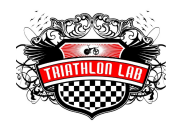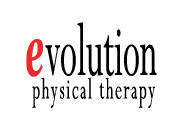Monitor Madness
It appears to me that everyone can agree that training with a heart rate monitor is a good idea. And they seem to agree that the majority of pre season training should be aerobic to build a strong aerobic base with a smaller percentage time spent training at or above threshold. But what too few can agree upon is how you locate that crossover point. So here I wade into the dark realm of "determining threshold", a discussion as congenial as a cancer society/tobacco industry debate circa 1970.
Let's start with something that almost everyone can agree upon: your maximum heart rate is a genetically set number that cannot be changed but your anaerobic threshold (AKA aerobic threshold, or lactate threshold) is something that can be improved upon. I want to keep this simple, so let's define some terms: max heart rate (max HR) is pretty straightforward. It's your ceiling - it's as hard as you can go. Your threshold (AT), on the other hand, is a point at which the body switches from the aerobic energy system to the anaerobic energy system. It may help to think of these as two different engines in the body. The aerobic engine is an efficient, environmentally friendly machine that can run all day. The aerobic engine runs pretty much on oxygen and fat (of which the body has plenty) and produces waste that is pretty easy to deal with like sweat, urine, carbon dioxide and a small amount of lactic acid. The anaerobic engine is another story. It's more like the engine you would take to the quarter mile drag strip - lots of power, but it won't last long. It runs pretty much on stored glycogen (glucose) alone and produces some ugly amounts of lactic acid as waste. So much lactic acid, in fact, that the body can't flush itself of the toxin fast enough and performance begins to decrease.
A triathlete needs an efficient energy system that can last a long time. Even a sprint distance race that lasts as little as an hour is a race that predominantly uses the aerobic energy system. By training the aerobic system to be the best that it can be the athlete will push the threshold boundary farther away. The results are simple; you get faster. To train the aerobic engine you need to know where your AT is and you need to stay under it. A heart rate monitor can tell you what your pulse rate is but you need to first determine what number represents your threshold. This is where the arguments can really get heated. There are several methods to finding your AT and they seem to be dependent on these factors: Time, Expense, Accuracy - choose any two. The most accurate results come from a lab, and after you get an appointment you're going to pay anywhere from $120 to $600 for the test. The quick and easy methods are cheap but the results can differ greatly. I submit my own personal info as an example:
My AT was determined by a lab last year to be at 161 beats per min (bpm).
One of the oldest methods to determine max heart rate is to take 220 and subtract your age. For me that would be 220-31=189 which is nice but as stated earlier, everybody agrees that max heart rate is a pretty useless number since its genetically set and I can't do thing to improve it. I've got a half a dozen books in my office that claim lactate threshold is approximately 65 to 90 percent of max. That broad spectrum tells me that my AT is some where between 122 bpm and 170 bpm. The difference in effort between those numbers is huge and would not result in very specific training.
A more complicated equation is the Karvonen Formula. Here again we start with 220 less my age (31) and get 189, then we subtract my resting heart rate (42) and get 147. Then I take that number and multiply by the desired intensity level. If AT lies between 65 and 90 percent then we will use those intensity levels; 65% of 147 is 96 and 90% of 147 is 132. Then to complete the formula we add the resting heart rate back on and determine that my AT is somewhere between 138 and 174. Better, but still too much gap.
When Mark Allen spoke to the TZ crew last month he said that to determine your AT all you needed to do was subtract your age from 180 and then tweak it by subtracting 10 if you're a couch potato, subtracting 5 if you're a weekend warrior, leaving the result unchanged if you workout 3 to 4 times per week for the last several months or add 5 if you have been training consistently for the last 2 years. That would put my AT at 154. How could anyone argue with Mark, he's a super nice guy and judging from his resume, this clearly works for him.
There is agreement that most athletes can maintain a heart rate that is at (or slightly above) their AT for a 30 to 45 minute workout. A great way to judge your AT would be to run a 10K or ride a one hour time trial and take your average heart rate for that effort. What is nice about this method is that you can revisit the test and change your training as you improve your AT. This method also settles another argument, the discussion over weather or not your AT remains the same for all three sports. This test will give you results specific for you on your bike or your run. Wearing a monitor during swim training isn't very functional but if you are really set on knowing your swim threshold then swim a 3000 yard or meter time trail and get your 100 yd/m average - that will be your threshold pace for a "hundred" and can be put to use for training.
Regardless of the number you get or how you got it, making an effort can help your training. On those days when you’re alone and motivation is needed, the heart rate monitor and an assumed number can be a real driving force. And on the other side of the coin, if you're on a group ride or run and you feel like your killing yourself to keep up with the hammer heads - that monitor and estimated AT can be the thing that helps make the decision to slow down to a more logical zone. Heart rate can be influenced by heat, hydration, fatigue, overreaching, over-training, and other factors. Its just a tool designed to assist your training, try not to become a slave to the device and remember to listen to how you are feeling first. ?



